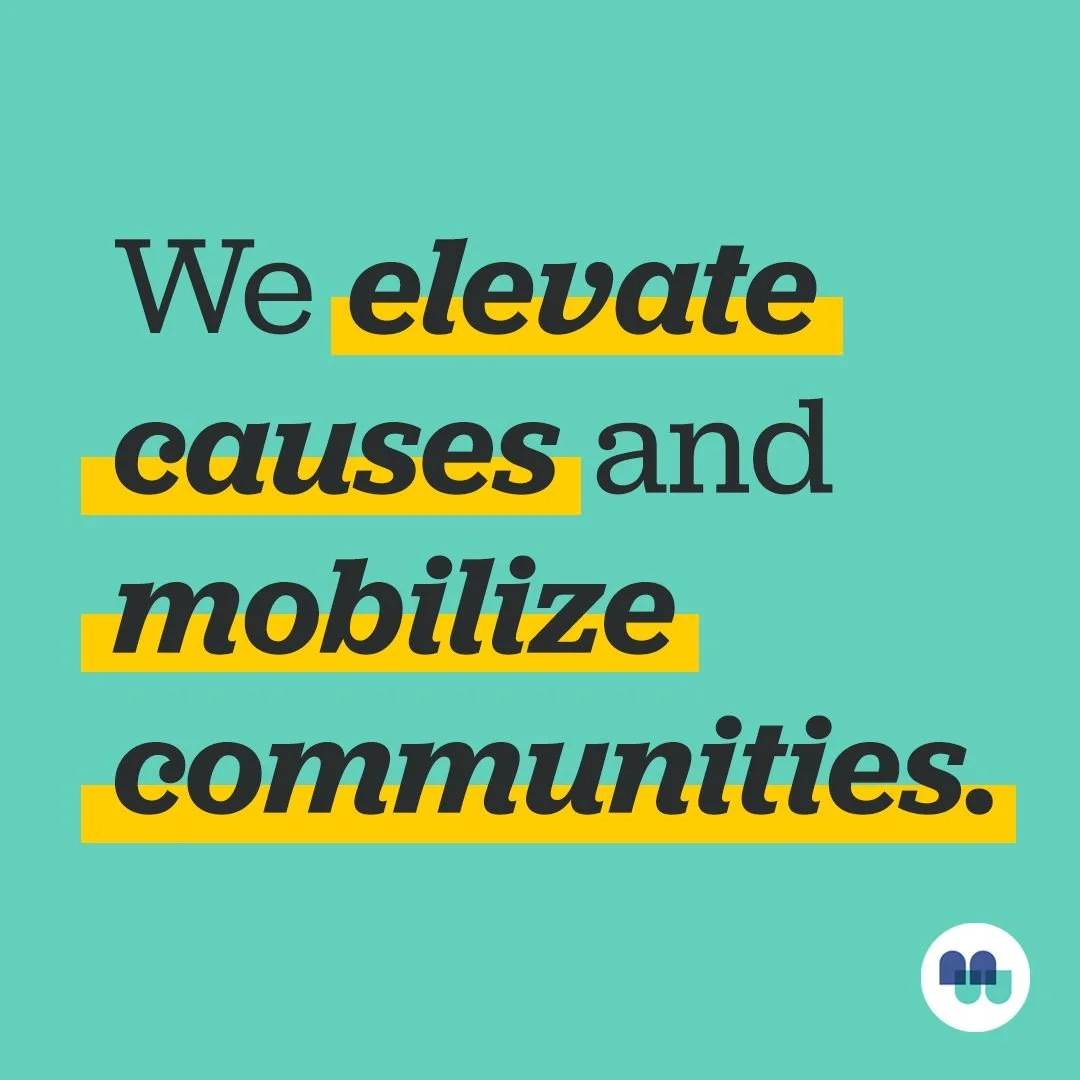A Case Study (Or, But Tell Us More About the Work)
Nonprofits are known for playing it safe, but I figured out something essential about people who work for nonprofits: Safety isn’t a desire, but a burden.
I want to be careful not to overstate this insight. There’s some risk of obviousness to the notion people want to be bold and ambitious, opposed to boring and hemmed in. But it was a useful realization as I led a rebrand from Anne Lewis Strategies to MissionWired – when I found a new identity that stood out from the institutional and law firm-esque naming conventions of our competitors and carved our own lane.
MissionWired stood out for its energy (no space?!) and rejection of stodgy names and initials. It’s aspirational, and we’ve benefited from that – big time. Again, I understood that no one wants to play it safe with their story. Rather, a culture of cautiousness seeped into the nonprofit and campaign sector. We succeeded by taking a different approach, being unafraid to stand out and claim an authentic identity. The rebrand exceeded our wildest expectations, captured in a few highlights:
Since rebranding, we’ve won partnerships with 25 of the 100 biggest nonprofits in the country – a 300% increase over our previous identity
Doubled monthly digital revenue
Grown overall strategic services revenue by 40%
Three years since the rebrand, our brand awareness and favorability are high, as measured by third-party analysts, and our new business pipelines are robust. In the rebrand I initiated and led, we found ourselves, and as a result, prospective partners are finding us.
How did we get here? Why did we risk falling on our faces to change a business that was doing well? It’s about a culture of refusing to settle, an organization that put its story into my hands as I grew into a chief marketing officer.
You outgrow your identity slowly, but it can crystallize in a moment. When that moment came, Anne Lewis Strategies had been a durable success, a powerhouse direct-marketing agency supporting Democratic campaigns and committees. Where it lacked, though, was in a more sustainable market, one that eluded us: nonprofits.
Sure, we’d won a couple nonprofits, and better yet, produced stellar results for them. Our services and approaches worked, leading to improved performance in fundraising and acquisition in every instance. But where we should have had momentum, we instead found we weren’t winning nonprofits at the win rates to which we’d become accustomed. Our breaking point came when we were finalists with a bluechip nonprofit and heard they’d decided against us because we were “too small.” More difficult to swallow, all the feedback we received pointed the same direction: we’d won the pitch process but still lost the business.
We needed a new identity, a better, truer one. It was my job to find it.
We worked with a fantastic web development and brand partner. They helped us achieve the visual identity that’s still driving growth today. But when it came to a name, I had a sense that I was going to be the one to come up with it. I wrote “MissionWired” in a notes doc on my phone, among a few other names. I kept it to myself as we went through the process of generating names with our partner. After 17 names, none of which felt quite right, I offered the name I’d come up with: MissionWired.
As part of a comprehensive launch, I wrote about the decision to rebrand to MissionWired and what the identity meant to us:
It was the recognition of what we’re about, and why we’re about it, that led us to our name. We’re MissionWired, a noun and an adjective: who we are, what we do, and with whom we do it. Our mission has always been to be the best fundraiser and audience builder for campaigns and causes. In pursuit of that, we obsess down to the word, pixel, and number in a cell on a spreadsheet. We’re there for our partners – because our partners and their missions deserve the best. We’re MissionWired. It’s who we’ve always been, and now our name reflects it.
Admittedly, there was no small measure of late-night anxiety over the prospect of changing our company’s name. The creative in me resists generalizations and platitudes, but something rings true about the notion that if something doesn’t scare us, at least a little, we probably haven’t been ambitious enough.
I was keenly aware of the significance that comes with changing an organizational identity. I also understood our company, our target markets, and where our offerings met their needs. As a result, I was convicted. I wanted a better story to tell. I saw, with clarity, what that story looked like, and we’re still telling it to this day, always looking for a fresh angle, a new invitation.


